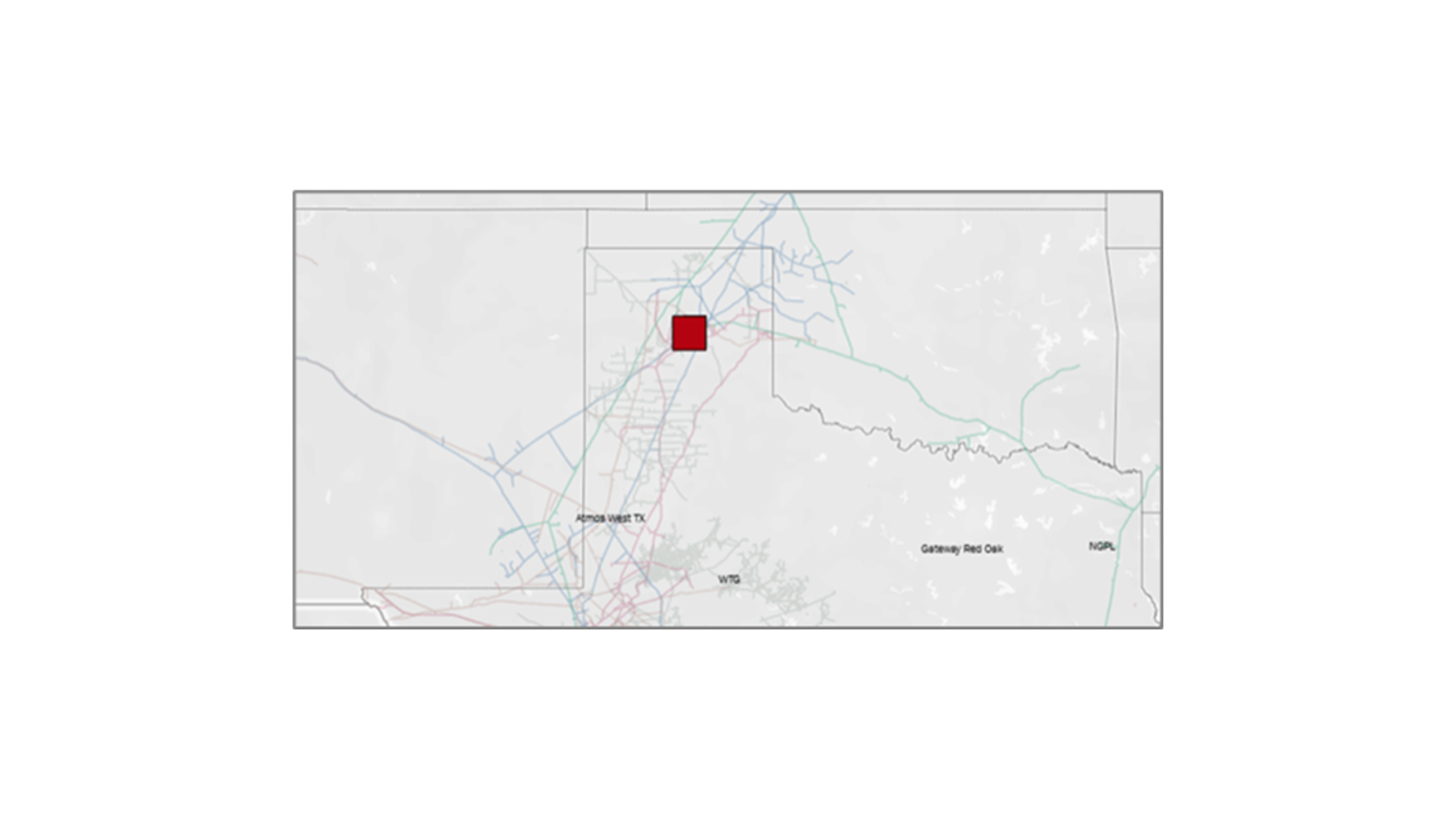Executive Summary:
Infrastructure: Energy Transfer signed an agreement with Fermi America to supply gas to the HyperGrid project in Amarillo, TX.
Rigs: The US lost 3 rigs for the week ending Oct. 12, bringing the total rig count to 516.
Flows: US natural gas volumes averaged 68.6 Bcf/d in pipeline samples for the week ending Oct. 26, down 0.3% W-o-W.
Storage: Traders expect the EIA to report a 74 Bcf injection for the week ending Oct. 24.
Infrastructure:
Energy Transfer (ET) is riding the wave of data center development in Texas. The company on Oct. 9 signed an agreement with Fermi America to supply gas to the HyperGrid project in Amarillo, TX.
The 11 GW HyperGrid project is one of the largest data center campuses planned in the US. Spanning 18 million square feet across 5,200 acres, it is a first-of-its-kind, behind-the-meter energy complex that will combine on-site natural gas, nuclear, solar and wind generation to power hyperscale AI computing. The project is designed to operate independently of the grid, and positions Amarillo at the center of a convergence between energy infrastructure and the data center boom.
The supply agreement will connect Fermi’s campus to ET’s intrastate system just south of the campus, securing natural gas feedstock for 2 GW of on-site generation (see map above from East Daley Analytics’ Data Center Demand Tracker). The interconnection, expected online by 1Q26, can source supply directly from ET’s Permian Basin assets, creating a direct link from upstream molecules to downstream AI power. The site is also close to the Anadarko Basin, where ET owns several G&P systems.
The HyperGrid project will require a new lateral but no major new long-haul infrastructure. The new supply tie-in will enable Fermi to begin delivering power well ahead of its longer-term rollout of nuclear generation.
The agreement with Fermi is part of an emerging trend that is changing how pipeline projects are commercialized in Texas, particularly out of the Permian. Historically, producers have bankrolled new gas pipelines as part of a ‘supply-push’ strategy to enable more oil development in the basin. New data center projects, along with population and economic growth in Texas, is creating a parallel demand pull from downstream customers seeking to secure firm supply.
Energy Transfer’s Hugh Brinson Pipeline reflects this new dynamic. ET in December 2024 reached a final investment decision on the $2.7B project from the Permian through the Dallas/Fort Worth area. Along with the usual suspects from the Permian upstream, executives cited strong contracting from demand-side customers like utilities and data centers for helping pull the project across the finish line.
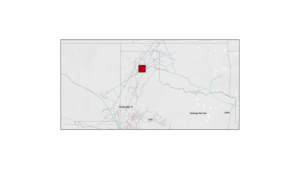
Since then, ET has continued to align its projects with downstream market growth. New expansions such as Desert Southwest reinforce a clear pivot from supply push to demand pull, with infrastructure increasingly driven by end-users rather than producers alone. The Fermi agreement continues this trend. ET is well positioned to capture the next wave of downstream natural gas demand from data centers, power plants and industrial customers that are shaping Texas’s energy future
For more information about Texas data center projects, see East Daley Analytics’ Data Center Demand Tracker.
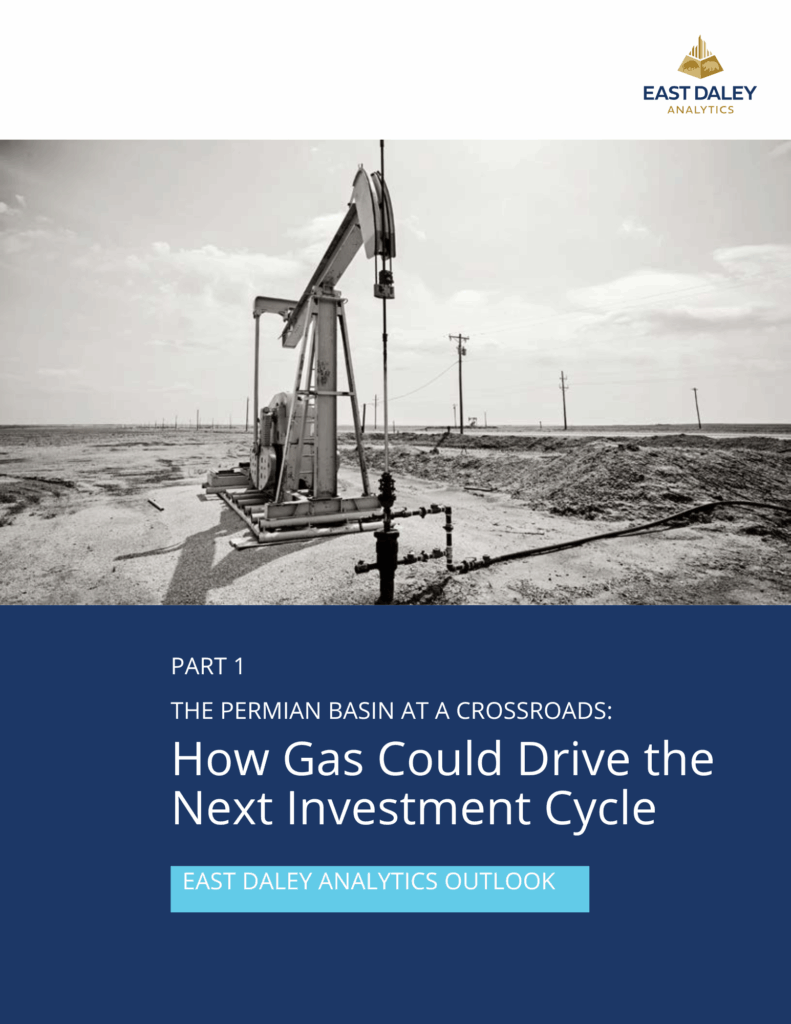
The Permian Basin at a Crossroads: Download the Latest White Paper
The Permian Basin is the heart of the US energy industry, supplying half of crude oil and NGL production and nearly 20% of natural gas. Yet market pressures are forcing changes, prompting billions in new pipeline investments and reorienting how operators approach the storied basin. East Daley’s new white paper, The Permian Basin at a Crossroads, is the first of a 3-part series looking at the shifts underway in the Permian. In this series, we reveal how LNG demand and AI data centers could transform Permian gas into a primary revenue driver. We also review the multi-billion-dollar infrastructure needed to unlock this shift, and what’s at stake for oil, gas and midstream operators. — Click here to download the The Permian Basin at a Crossroads white paper!
Rigs:
The US rig count decreased by 3 during the week of Oct. 12 to 516. The Permian (-3), Anadarko (-1) and Powder River (-1), and Marcellus + Utica basins lost rigs for the week, while the Denver-Julesburg (+1), Eagle Ford (+1) and Barnett (+1) gained rigs.
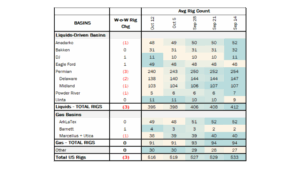
See East Daley Analytics’ weekly Rig Activity Tracker for more information on rigs by basin and company.
Flows:
US natural gas volumes averaged 68.6 Bcf/d in pipeline samples for the week ending Oct. 26, down 0.3% W-o-W.
Major gas basin samples declined 1.0% W-o-W to 42.3 Bcf/d. The Haynesville sample declined 2.0% to 9.4 Bcf/d, and the Marcellus+Utica sample slid 0.2% to 32.0 Bcf/d.
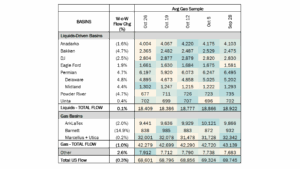
Samples in liquids-focused basins increased 0.1% to 18.4 Bcf/d. The Permian sample rose 4.75% to 6.2 Bcf/d, while the Bakken sample declined 4.7% W-o-W.
Storage:
Traders and analysts expect the Energy Information Administration (EIA) to report a 74 Bcf injection for the week ending Oct. 24. An injection of 74 Bcf would increase the surplus to the five-year average by 7 Bcf to 171 Bcf. The storage surplus to last year would decrease by 5 Bcf to 29 Bcf.
Looking ahead to November, we anticipate a net withdrawal for the month — but just barely. Assuming working gas exits October at 3,911 Bcf, we forecast total withdrawals for November of just 18 Bcf in the latest Macro Supply & Demand Report, leaving inventory at 3,891 Bcf as of Nov. 28.
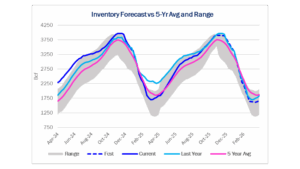
Based on weather forecasts, we expect the injection season will extend into the first two weeks of November – not atypical in recent years. We forecast about 50 Bcf in total injections in the first half of the month. The last two weeks of November will be the swing. The latest 10- to 15-day weather forecast indicates that cold weather will envelope the Midwest, Northeast and Southeast, taking temperatures sharply lower through Nov. 13. If this weather pattern holds to close out the month, we believe our forecast for a net withdrawal stands.
See East Daley Analytics latest Macro Supply & Demand Report for more analysis on storage and the winter market outlook.
Calendar:

Subscribe to East Daley’s The Daley Note (TDN) for midstream insights delivered daily to your inbox. The Daley Note covers news, commodity prices, security prices, and EDA research likely to affect markets in the short term.


